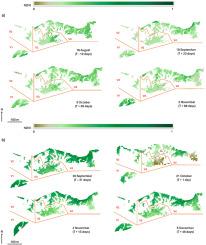How successive meteotsunami and storm activity disrupts saltmarsh vegetation
IF 2.6
3区 地球科学
Q1 MARINE & FRESHWATER BIOLOGY
引用次数: 0
Abstract
Meteotsunami (meteorological tsunami) are globally occurring progressive shallow water waves with a period of between 2 and 120 min which result from sudden pressure changes and wind stress due to moving atmospheric systems. These waves are known to cause destruction to and loss of assets. Currently, there is no research into the impact of meteotsunami on coastal ecosystems such as saltmarshes, despite the significant role saltmarsh play in providing vital habitats for resident and migrating birds, natural flood defences and climate mitigation. As such the restoration of saltmarshes has emerged as a pivotal focus within the UK Government's environmental policy framework.
This paper examines the impact of two meteotsunami events (2016 and 2021) on saltmarsh vegetation in the southwestern UK. An assessment of the vegetation pre and post event was undertaken using high resolution satellite imagery and the Normalised Difference Vegetation Index (NDVI). Results revealed that the 2016 meteotsunami exacted minimal vegetation change with a decrease in NDVI from 0.26 to 0.23 and a temporary reduction in coverage of 40 %, suggesting a potential resilience to single episodic disturbances. In contrast, the 2021 event, compounded by multiple significant storms and additional meteotsunami, led to a decline in NDVI values from 0.44 to 0.22 and a temporary reduction in vegetation coverage of 66 %. Both events indicated a short-term disruption with a relatively rapid rebound (within one to three months). However, the longer-term effects of such a disruption on the saltmarsh ecosystem need to be investigated further.
This comparative analysis underscores the complex interactions between meteotsunami, climatic phenomena, and coastal vegetation dynamics, highlighting the necessity for ongoing monitoring and research to understand the resilience mechanisms of such ecosystems in the face of increasing climatic variability and extreme weather events.

连续的海啸和风暴活动是如何破坏盐沼植被的
气象海啸是全球范围内发生的渐进式浅水波,周期在2至120分钟之间,是由大气系统移动引起的突然压力变化和风应力引起的。众所周知,这些海浪会造成财产的破坏和损失。尽管盐沼在为留鸟和候鸟提供重要栖息地、天然防洪和减缓气候变化方面发挥着重要作用,但目前还没有研究海啸对盐沼等沿海生态系统的影响。因此,盐沼的恢复已成为英国政府环境政策框架内的关键重点。本文研究了两次海啸事件(2016年和2021年)对英国西南部盐沼植被的影响。利用高分辨率卫星图像和归一化植被指数(NDVI)对事件前后的植被进行了评估。结果显示,2016年的海啸造成了最小的植被变化,NDVI从0.26降至0.23,覆盖范围暂时减少了40%,表明对单一事件干扰具有潜在的恢复能力。相比之下,2021年的事件,加上多次重大风暴和额外的海啸,导致NDVI值从0.44下降到0.22,植被覆盖率暂时减少了66%。这两个事件都表明了短期的中断和相对快速的反弹(在一到三个月内)。然而,这种破坏对盐沼生态系统的长期影响需要进一步调查。这一对比分析强调了海啸、气候现象和沿海植被动态之间复杂的相互作用,强调了持续监测和研究的必要性,以了解这些生态系统在面对日益增加的气候变率和极端天气事件时的恢复机制。
本文章由计算机程序翻译,如有差异,请以英文原文为准。
求助全文
约1分钟内获得全文
求助全文
来源期刊
CiteScore
5.60
自引率
7.10%
发文量
374
审稿时长
9 months
期刊介绍:
Estuarine, Coastal and Shelf Science is an international multidisciplinary journal devoted to the analysis of saline water phenomena ranging from the outer edge of the continental shelf to the upper limits of the tidal zone. The journal provides a unique forum, unifying the multidisciplinary approaches to the study of the oceanography of estuaries, coastal zones, and continental shelf seas. It features original research papers, review papers and short communications treating such disciplines as zoology, botany, geology, sedimentology, physical oceanography.

 求助内容:
求助内容: 应助结果提醒方式:
应助结果提醒方式:


